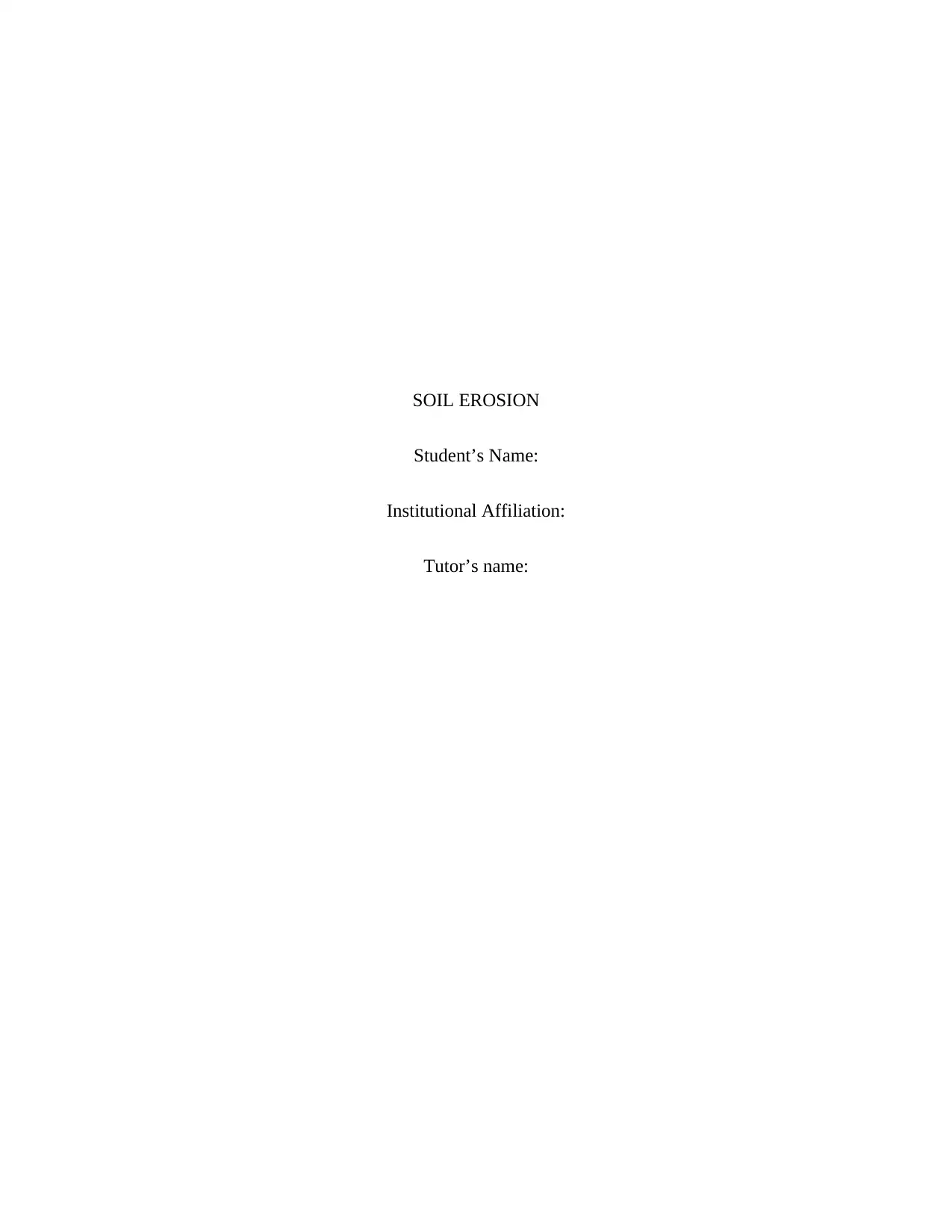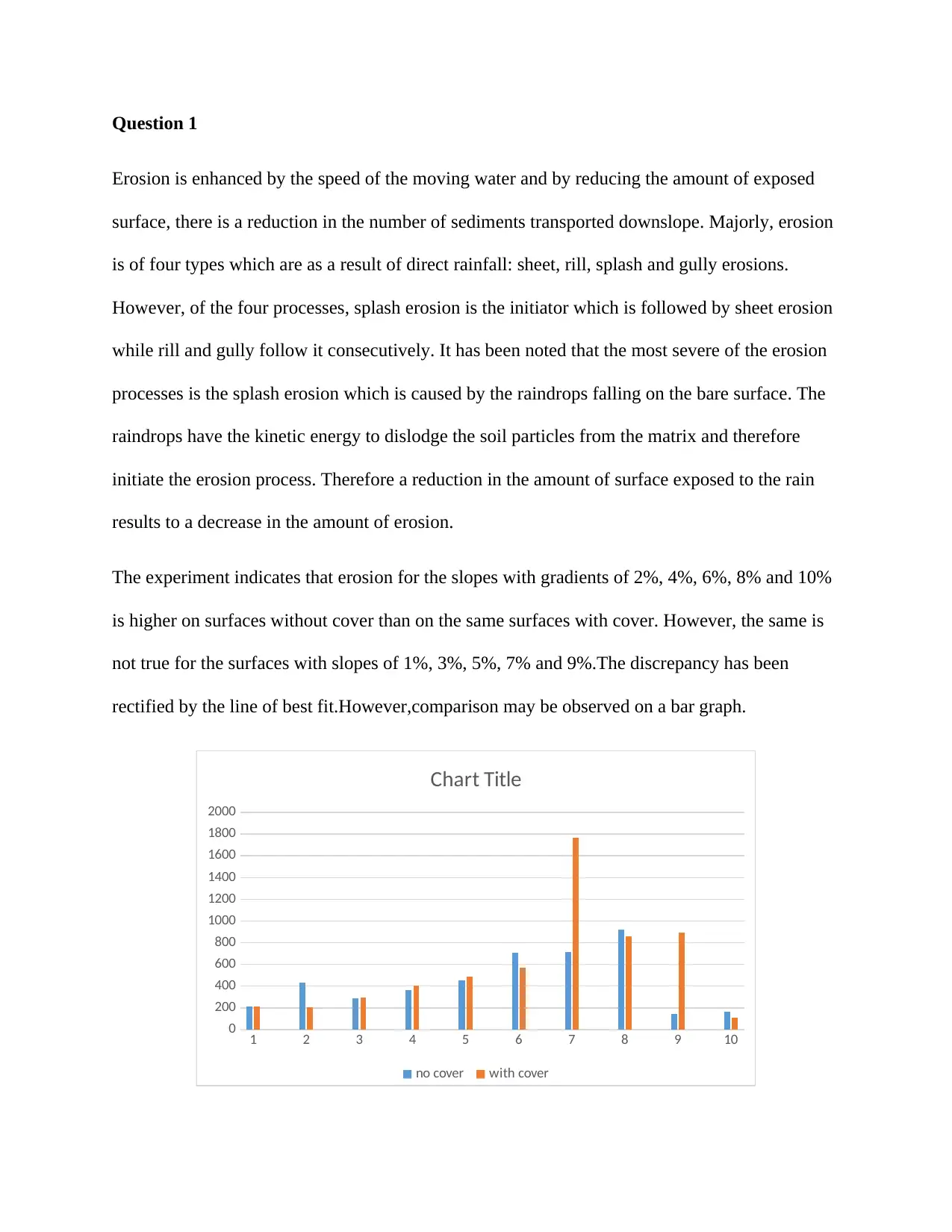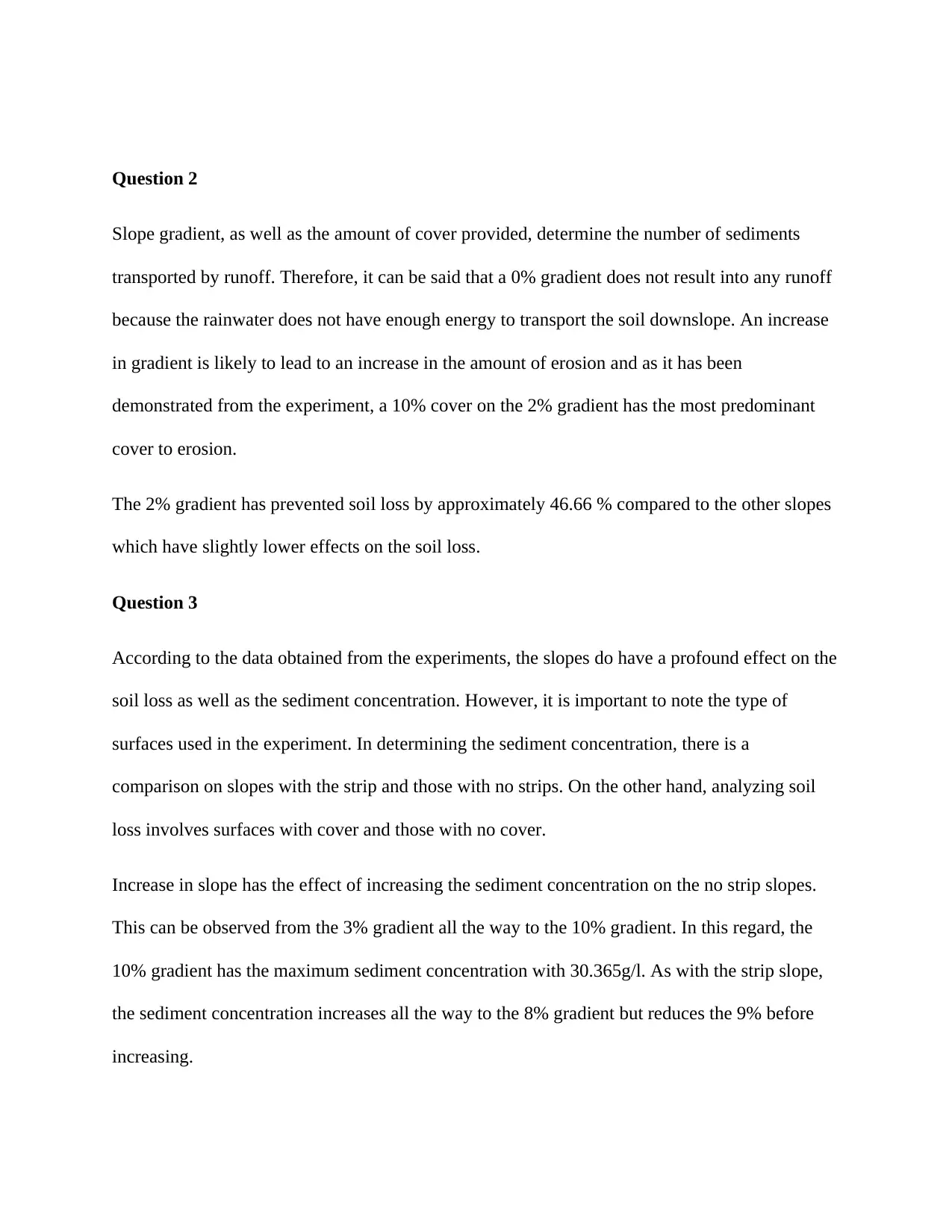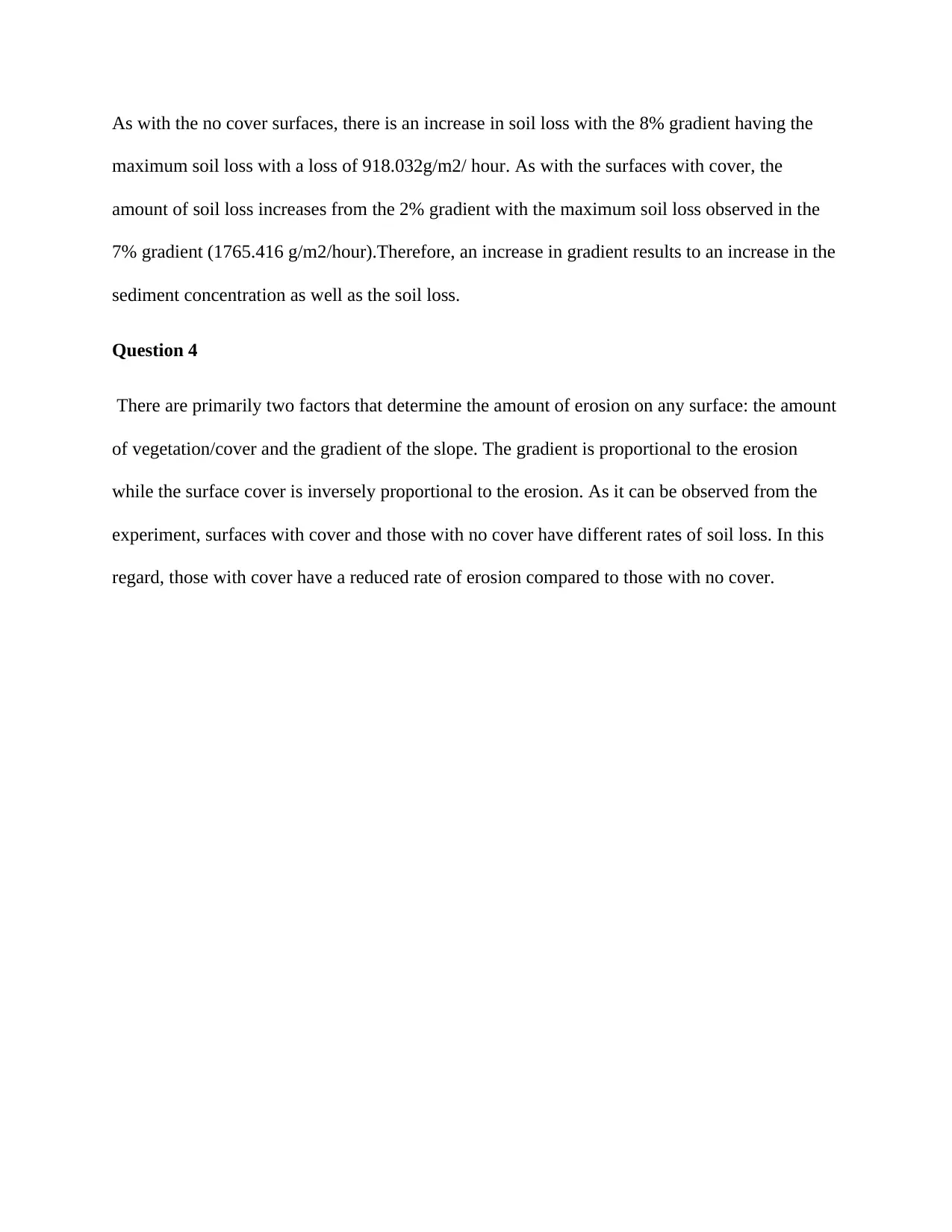Analysis of Soil Erosion: Effects of Gradient and Surface Cover
VerifiedAdded on 2020/05/16
|4
|717
|444
Homework Assignment
AI Summary
This assignment solution analyzes the factors influencing soil erosion, focusing on the impact of slope gradient and surface cover. The analysis begins by outlining the different types of erosion, emphasizing the role of splash erosion as the initiator. The solution presents experimental data demonstrating the relationship between slope gradient, surface cover, and sediment transport, highlighting how increased gradients and the absence of cover lead to higher erosion rates. The analysis further explores sediment concentration and soil loss across various slope gradients, comparing surfaces with and without strips and cover. The findings reveal that increased slope gradient correlates with increased sediment concentration and soil loss, while surface cover acts as a mitigating factor. Ultimately, the assignment underscores the importance of both vegetation/cover and slope gradient in determining the extent of erosion, with surface cover inversely proportional to erosion and gradient proportional to erosion.
1 out of 4





![[object Object]](/_next/static/media/star-bottom.7253800d.svg)